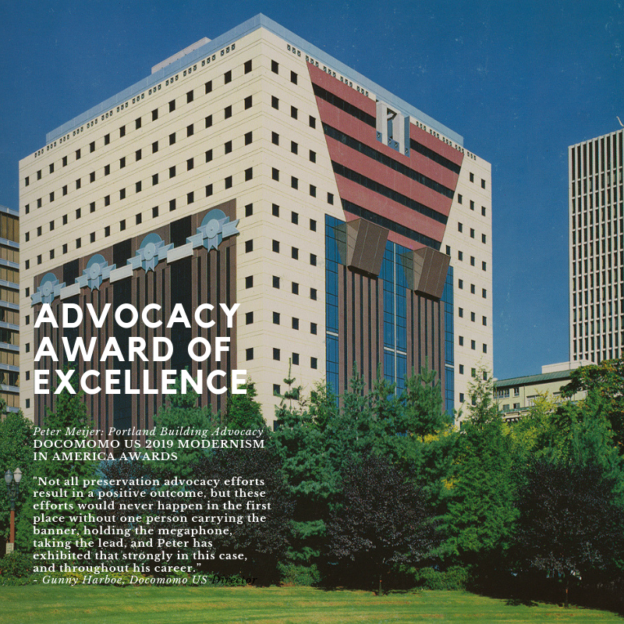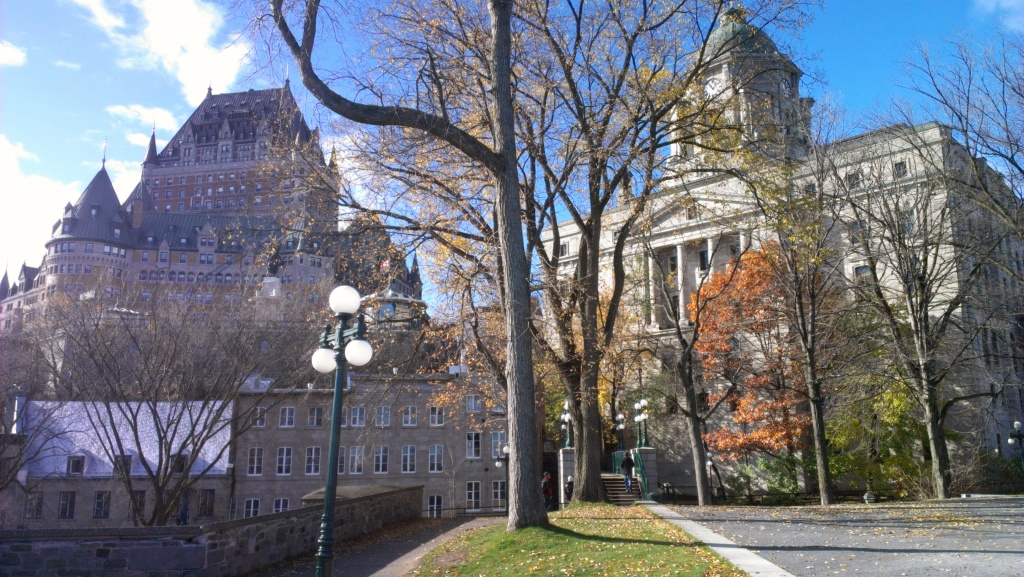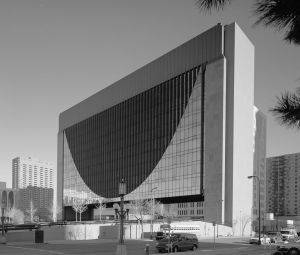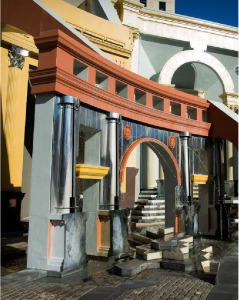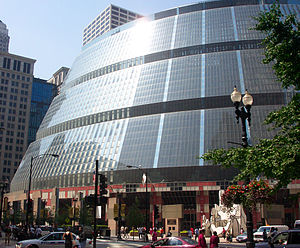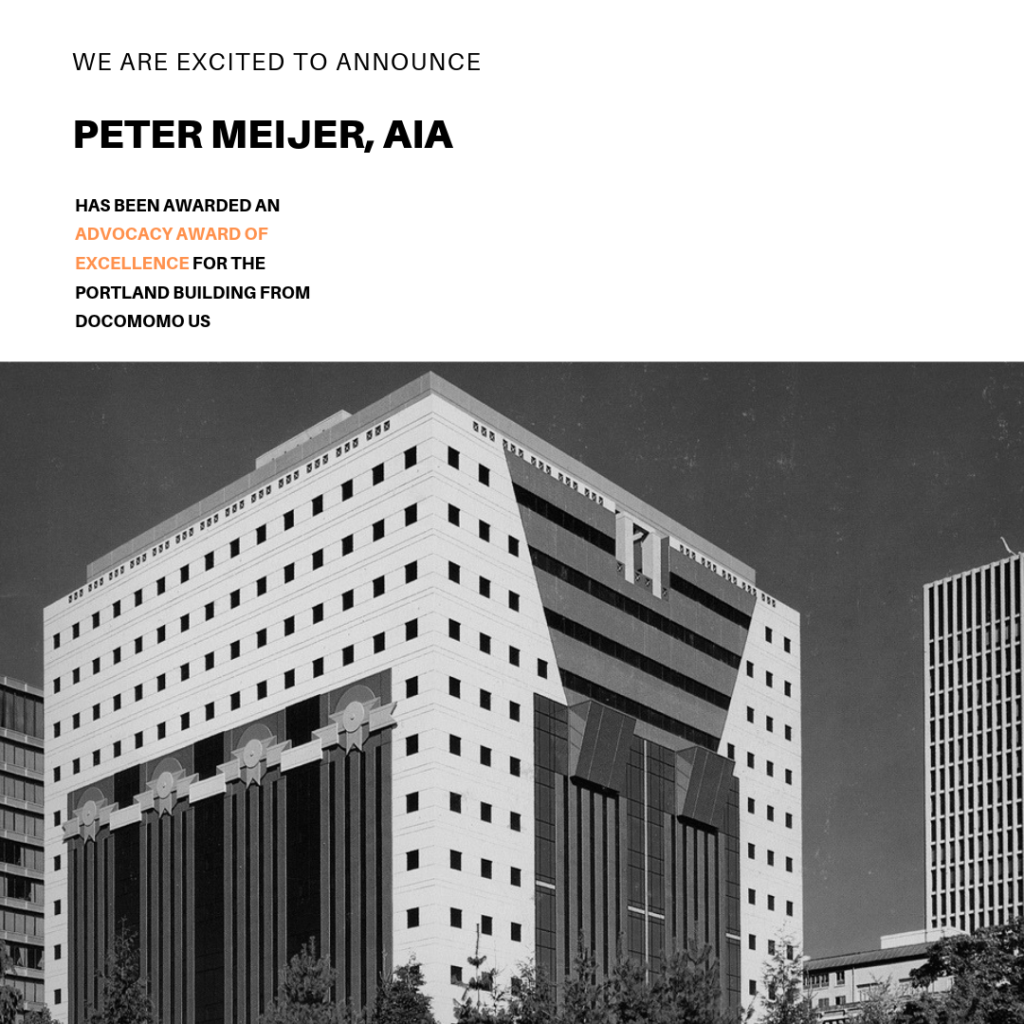
“Not all preservation advocacy efforts result in a positive outcome, but these efforts would never happen in the first place without one person carrying the banner, holding the megaphone, taking the lead, and Peter has exhibited that strongly in this case, and throughout his career.”
– Gunny Harboe, Docomomo US Director
Via DOCOMOMO US
An Advocacy Award of Excellence is given to Peter Meijer, AIA, NCARB, for his leadership and advocacy work related to the Portland Public Service Building (the Portland Building). As the founding President of DOCOMOMO US/Oregon, Peter and his architectural practice Peter Meijer Architect, PC (PMA) played a pivotal role in speaking up and advocating for the sensitive preservation of the Postmodern icon, designed by Michael Graves and completed in 1982.
In 2011, PMA wrote the nomination to add the building to the National Register of Historic Places, a serious undertaking, without being contracted to do so. Shortly thereafter the city began to consider making improvements after years of deferred maintenance and chose to move forward with a reconstruction plan that disregarded the Secretary of the Interior’s Standards.
Despite opposition from PMA, local and national advocates, and a letter from the National Park Service stating the building would be “de-listed” from the National Register, the Portland Landmarks Commission nevertheless voted to approve the reconstruction plan. Faced with significant alteration of arguably Portland’s most important architectural icon, Peter pushed forward individually and appealed the decision. Portland City Council denied the appeal, essentially ending the effort. Peter remained dedicated to the cause throughout the entire process, despite substantial local professional risk.
Although the fight is now over, DOCOMOMO US/Oregon has not let the story go out of the headlines, continuing to document the ongoing dismantling of the Portland Building’s façade.
For the full list of 2019 MODERNISM IN AMERICA award winners, please visit DOCOMOMO US.

